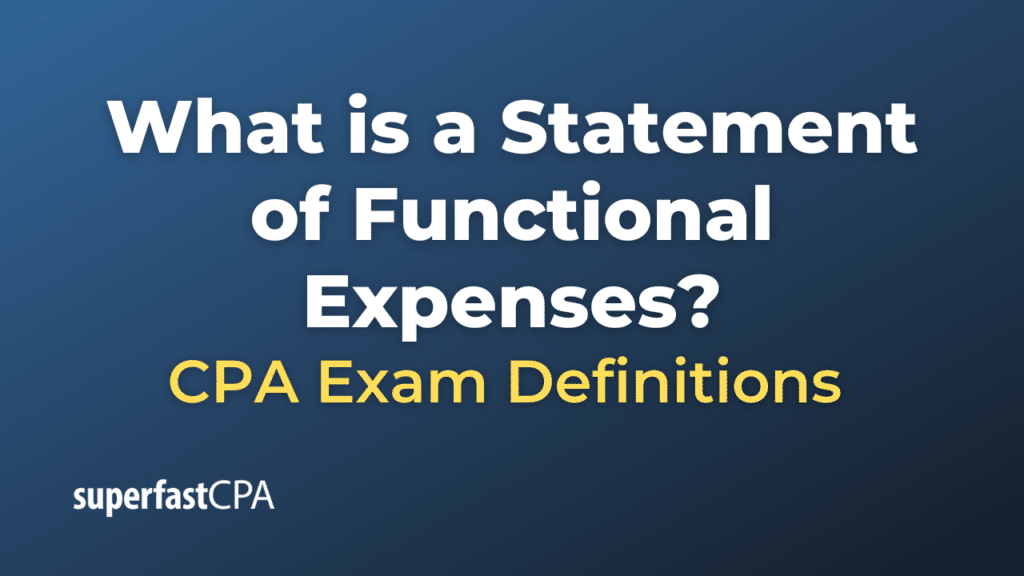Statement of Functional Expenses
A Statement of Functional Expenses is a type of financial statement that nonprofit organizations often use to provide a detailed breakdown of their expenses by both nature (e.g., salaries, rent, utilities) and function (e.g., program services, management and general, fundraising). The main objective of this statement is to give donors, grantors, and other stakeholders a clear picture of how a nonprofit spends its resources on various programs and services, as well as administrative and fundraising activities.
Key components and classifications of a Statement of Functional Expenses include:
- Expenses by Nature: These are the different types of costs incurred by the organization. Examples include:
- Salaries and wages
- Employee benefits
- Rent
- Utilities
- Depreciation
- Supplies
- Professional fees
- Expenses by Function: These represent the primary purposes for which expenses are incurred. The main categories often include:
- Program Services: These are the direct costs associated with carrying out the organization’s mission and programs. If a nonprofit operates multiple programs, this section may further break down expenses for each distinct program.
- Management and General: These costs are not directly attributable to a specific program but are necessary for the overall operation and management of the organization. This includes expenses like accounting, governance, human resources, and general administrative functions.
- Fundraising: These expenses are associated with efforts to raise financial resources for the organization. It might include costs for events, campaigns, or other donor-related activities.
The statement essentially provides a matrix with expenses by nature on one axis and expenses by function on the other. This layout helps in understanding both the types of expenses incurred and the main purposes or functions for which these expenses were incurred.
For those who review financial statements of nonprofit organizations, the Statement of Functional Expenses offers transparency and insight into how resources are being used, thus allowing them to make informed decisions about supporting or assessing the organization.
Example of a Statement of Functional Expenses
Here’s a simplified example of a Statement of Functional Expenses for a hypothetical nonprofit organization called “Helping Hands”:
| Expenses by Nature/Function | Program Services | Management and General | Fundraising | Total |
|---|---|---|---|---|
| Salaries and wages | $100,000 | $30,000 | $20,000 | $150,000 |
| Employee benefits | $15,000 | $5,000 | $2,500 | $22,500 |
| Rent | $10,000 | $3,000 | $2,000 | $15,000 |
| Utilities | $5,000 | $1,500 | $1,000 | $7,500 |
| Depreciation | $8,000 | $2,000 | $1,000 | $11,000 |
| Supplies | $12,000 | $3,000 | $1,500 | $16,500 |
| Professional fees | $4,000 | $10,000 | $1,000 | $15,000 |
| Total by Function | $154,000 | $54,500 | $29,000 | $237,500 |
In this example:
- The majority of the organization’s expenses relate to Program Services, which is what you would typically expect for a nonprofit. These are the costs directly tied to fulfilling the organization’s mission.
- Management and General expenses represent the overhead necessary to run the organization, such as leadership salaries, accounting, and general office expenses.
- Fundraising costs capture the expenses tied to raising money for the organization.
It’s important to note that an organization with a very high proportion of expenses in the “Management and General” or “Fundraising” categories, relative to “Program Services”, might raise questions about its efficiency and allocation of resources. However, context is crucial, and it’s essential to consider the nature of the nonprofit’s work, its size, its stage of growth, and other factors when making such evaluations.













